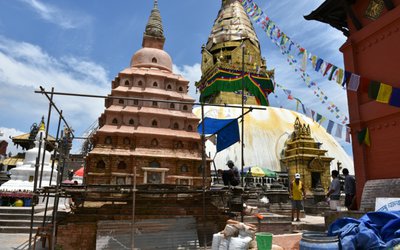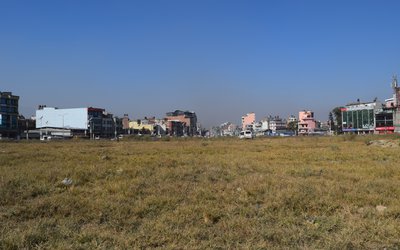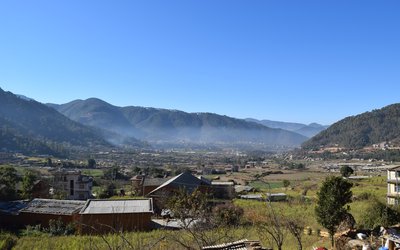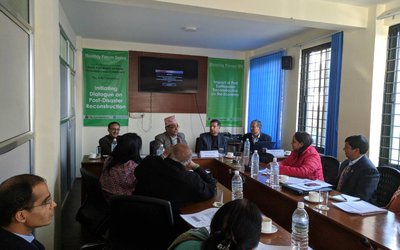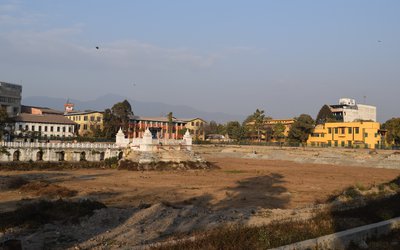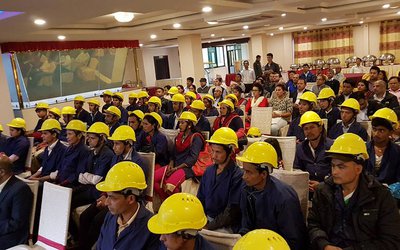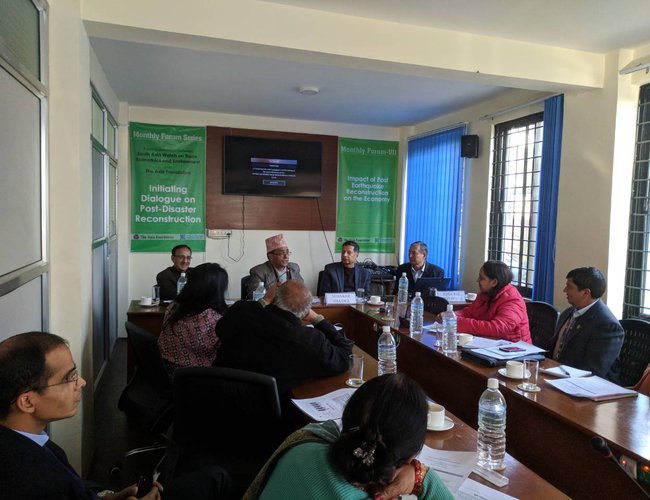
Disasters not only bring about destruction of life and property, the aftermath of a disaster and the period of prolonged reconstruction can engender conflicts within and among the communities affected by it.
Conflicts are part and parcel of disasters that disrupt the lives and livelihoods of millions of people. Conflicts are manifestation of the stress, fear, deprivation, scarcity and loss in a post-disaster situation, yet they seem to be given lesser importance than the more tangible and visible destruction of life and property as well as relief efforts. Relief and reconstruction efforts can also induce conflicts within and among communities as well as between the communities and the state itself. As Nepal undertakes massive reconstruction activities in the aftermath of the 2015 earthquake, proactive efforts and measures to manage and resolve conflict should be a part of the reconstruction strategy.
In an economically poor country like Nepal, disaster can further limit access to natural and financial resources available in the affected communities. This could lead to conflicts between the households living within the communities and it is an imperative to put in place mechanisms that prevent conflicts from escalating.
Massive disasters can result in the displacement of communities forcing them to find safe refuge in other regions of the country. This can cause friction between the displaced communities and the host communities, especially because of resource limitations of the host communities as well. Issues of land encroachment and water resources could be more prominent.
In an ethnically diverse country like Nepal, the religious, ethnic dimensions of conflict cannot be overlooked. Conflicts related to race, religion and ethnicity which the country had already been facing pre-disaster, can become even more evident post disaster, especially in the sharing of the available natural resources. Communities may be reluctant to share the available resources with other communities and might feel that the resources are being encroached upon by another ethnic or caste group.
The systemic biases that have resulted from the skewed structure of social institutions and the resulting distribution of power and resource have been yet another cause of conflicts within and among communities. The Nepali society has been stratified based on caste with a few castes perceived to be better than others. The generations of discrimination against the ‘Dalits’ and other ethnic communities have left these groups more vulnerable in terms of their access to natural and financial resources. A disaster does not discriminate but the already existing vulnerabilities make these groups more prone to destruction induced by disaster as well as leave them less likely to bounce back from the destruction of assets brought about by the disaster. Having said this, it would be remiss not to mention that there are vulnerable people along all the groups in these social strata whose grievances also need to be addressed. These social institutions have also created biases during the distribution of relief with people looking out only for their own communities resulting in grievances among the communities who feel left behind. The structure of the social institutions and the vast array of conflicts it can induce have deep roots, and these roots need to be understood for the sustainable resolution of conflicts.
A gendered perspective is also necessary for the understanding of disaster-induced conflicts. Women, like the marginalized caste and ethnic groups, have faced generations of systemic discrimination. Women’s roles have been defined by the society as a homemaker, wife, and mother and not as an economic agent. Death or out-migration of male family members have left women with the responsibility of providing for their families as well as the reconstruction of their damaged houses. To add insult to injury, the ambiguous system of property ownership has made it difficult for them to claim the reconstruction cash grant. This creates grievance in yet another marginalized group. A recent study conducted by The Asia Foundation, Nepal has shown a rise in domestic violence post disaster.
Conflict also manifests itself in the form of distrust of the state among the affected communities, especially during the period of relief, reconstruction and recovery. A large proportion of the population has been affected by the earthquake. They have been living in makeshift shelters for more than two and a half years after the earthquake. Reconstruction and recovery have seen a large number of grievances, especially in the distribution process of the housing grant, starting from the survey of the affected households to the distribution of victim identity cards to, ultimately, the distribution of grants. The state has shown weakness in the management of the reconstruction processes and the reasons have been numerous which will not be dealt with here. These inefficiencies from the state institutions have exacerbated the general population’s distrust of the reconstruction and recovery processes as well as of the state. Moreover, this protracted period of struggles triggered by the earthquake and compounded by the institutional weakness can manifest in stress, conflict between communities and violence within families.
Conflict resolution needs to be embedded in the recovery and reconstruction process. A mechanism to resolve disaster-induced conflicts in a disaster-prone country like Nepal is absolutely essential. Having a policy on post-disaster conflict resolution is important and so is the implementation of that policy. Therefore, maintaining institutional memory is an imperative for responding to future disasters. A well-established conflict resolution mechanism and management information system can rid our institutions of the institutional amnesia they have suffered so far. The linkages between policy and its implementation can be provided by the recently elected representatives who can act as mediators for the settlement of disputes.
A holistic approach for conflict resolution should be adopted as factors that appear on the surface may not be the only reason for conflict. The societal and institutional dimensions should be understood and the underlying causes of the conflicts should be addressed. Prevention of conflict stemming from issues of caste, race, religion and ethnicity can be done systematically through education from an early age. Conflict resolution needs to fulfill the dual criteria of providing immediate resolution and being sustainable which might require transformative social and structural changes. Identifying the deep-seated causes of the conflict is definitely the first step towards its resolution.

Pragati Koirala
Koirala is a Research Associate South Asia Watch on Trade, Economics and Environment (SAWTEE) Kathmandu, Nepal
- Towards A Disaster Resilient Country
- Jan 07, 2018
- Recovery And Reconstruction: A look At The Reconstruction Expenditure
- Oct 15, 2017
- Post-quake Reconstruction: Hope Beckons After Slow Start
- Aug 27, 2017
